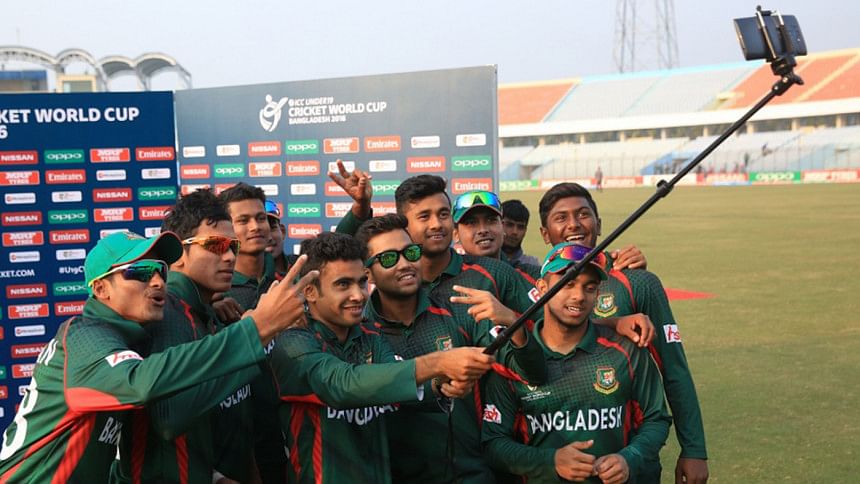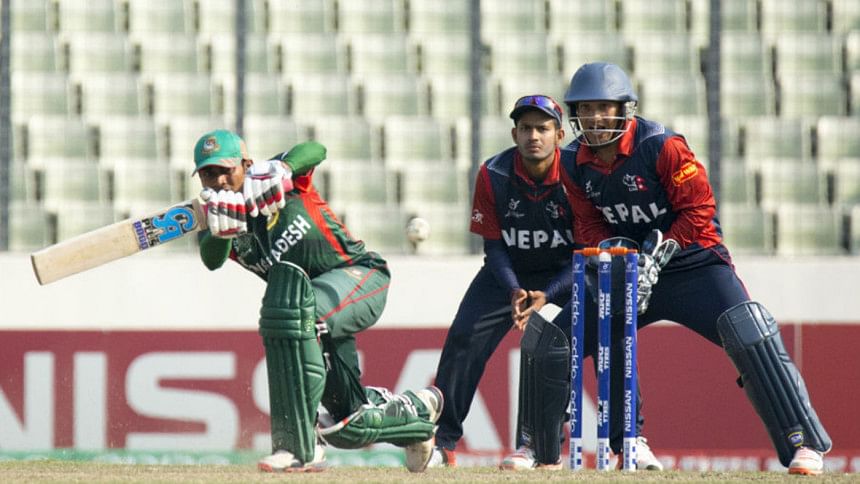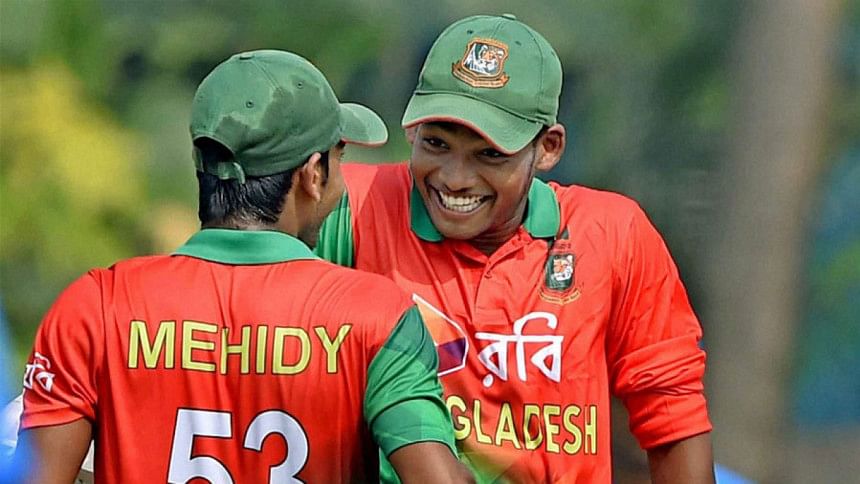The rondo behind U19 Tigers’ athleticism

Bangladesh Under-19's fielding during this World Cup has certainly caught the eye. The players have shown all-round athleticism in creating run-out opportunities, cutting out angles inside the 30-yard circle, as well as sliding and diving in the boundary line to stop fours.
In the quarter-final against Nepal on Friday, Nazmul Hossain Shanto effected two of four run-outs, while also taking a brilliant diving catch to his right fielding at gully against Namibia in Cox's Bazar. The captain Mehedi Hasan Miraz, too, has taken a brilliant diving catch, against South Africa in Chittagong.
The players' movement across the turf when batsmen try to place the ball in the gaps has been the most impressive part of their fielding. Never before has a Bangladesh team fielded so well as a collective unit inside the circle.
Of course, the likes of Mohammad Ashraful, Aftab Ahmed and Naeem Islam were marked out as talented fielders from a young age, but they hardly played together enough times to form the off-side ring. But in this team, Miraz, Shanto, Saleh Ahmed Shawon and Joyraz Sheik have shown their willingness to stop the ball at all costs.
Pace bowling allrounder Mohammad Saifuddin has also been quite good in the boundary line, where Shawon too been used from time to time, especially in the end overs.
What has impressed everyone within the coaching staff is the players' attitude towards fielding. While many of them are not naturally gifted athletes, they have worked hard at being aggressive going towards the ball. What has also helped is Miraz's own fast movement across the turf which has motivated the rest of the team.

Two days after their win over Nepal, the Bangladesh players were playing the rondo, where two players run after a football that is being passed around by the rest of the squad. It is a popular training method used in football to keep the ball away from the defenders, who are tasked with winning it back.
If one of the two defenders can touch the ball while it is being passed, the player who made the unsuccessful pass will replace the defender. It is now seen quite regularly during training in Bangladesh cricket circles.
On Sunday morning, during a training drill at the Academy ground in Mirpur, Pinak Ghosh enters the rondo circle amid huge roars form his team-mates. Ghosh had recently lost weight and admitted that the head coach Mizanur Rahman Babul had told him to avoid fast food like burgers and sandwiches, as well as to improve his fitness.
A hard-hitting opener, Ghosh is yet to get among the runs in the World Cup, and is one of the few who has not looked as spry in the field as his other team-mates. But during the rondo, there is something else on Ghosh's mind.
He does not want to look bothered about becoming the defender in the rondo, but soon, his team-mates begin making him run around a lot by passing the ball just away from his grasp.
It does not stop for five minutes, which in a rondo is quite a lot of time. Finally, someone makes the mistake of passing the ball short of the next man and Ghosh's defending partner manages to touch the ball. Ghosh smiles while the rest of the team, including the coach Mizanur, groans; it is now Mizanur who has to take the position of one of the defenders.
Mizanur immediately asks the trainer Morshedul Hasan, "Sizar [his nickname], we don't have much time left, do we?"
"We still have five minutes," Morshedul replies.
Cue laughter and claps from the boys, who have already planned to keep their coach in the circle for a long time.
"Do it slowly, don't move the ball too fast," they tell each other.
Finally, after about three minutes, the loud whistle is heard, signalling the end of the rondo. There will be running now.

As the players run at full pelt for around 50 yards and then jog back over and over again, the captain Miraz calls out to everyone: "Come on guys, I know this is hard but let's finish it together."
After they complete the running session, someone within the players suddenly challenges Saeed Sarkar to a sprint dual with the team's operations manager Sajjad Ahmed and fielding coach Sohel Islam.
Saeed, like Ghosh, is another player who has had to lose weight in the last few months. He has also dropped a sitter in the first game against South Africa, and has looked a bit slow in the field.
He marginally wins both races. This makes the whole team laugh. But eventually, many of them pat his back and give him plenty of high-fives. Saeed looks knackered, but is satisfied.
Bangladesh Under-19's fielding has improved over the last 12 months, especially as the players have been encouraged not to be too bothered about missing the odd ball in the rush to attack the ball. Long barriers are often avoided even in the boundary line, as they hunt for run-out opportunities.
While the team has led the way in batting and bowling in youth ODIs since January last year, it has been their fielding in the World Cup that has given them the marginal advantage when the batting and bowling has not worked out as expected.
Now, the hope is for Ghosh and Saeed to become just as good as Miraz and Shanto are as fielders. Apparently, all that they need is just a little push from their team-mates.


 For all latest news, follow The Daily Star's Google News channel.
For all latest news, follow The Daily Star's Google News channel. 





Comments